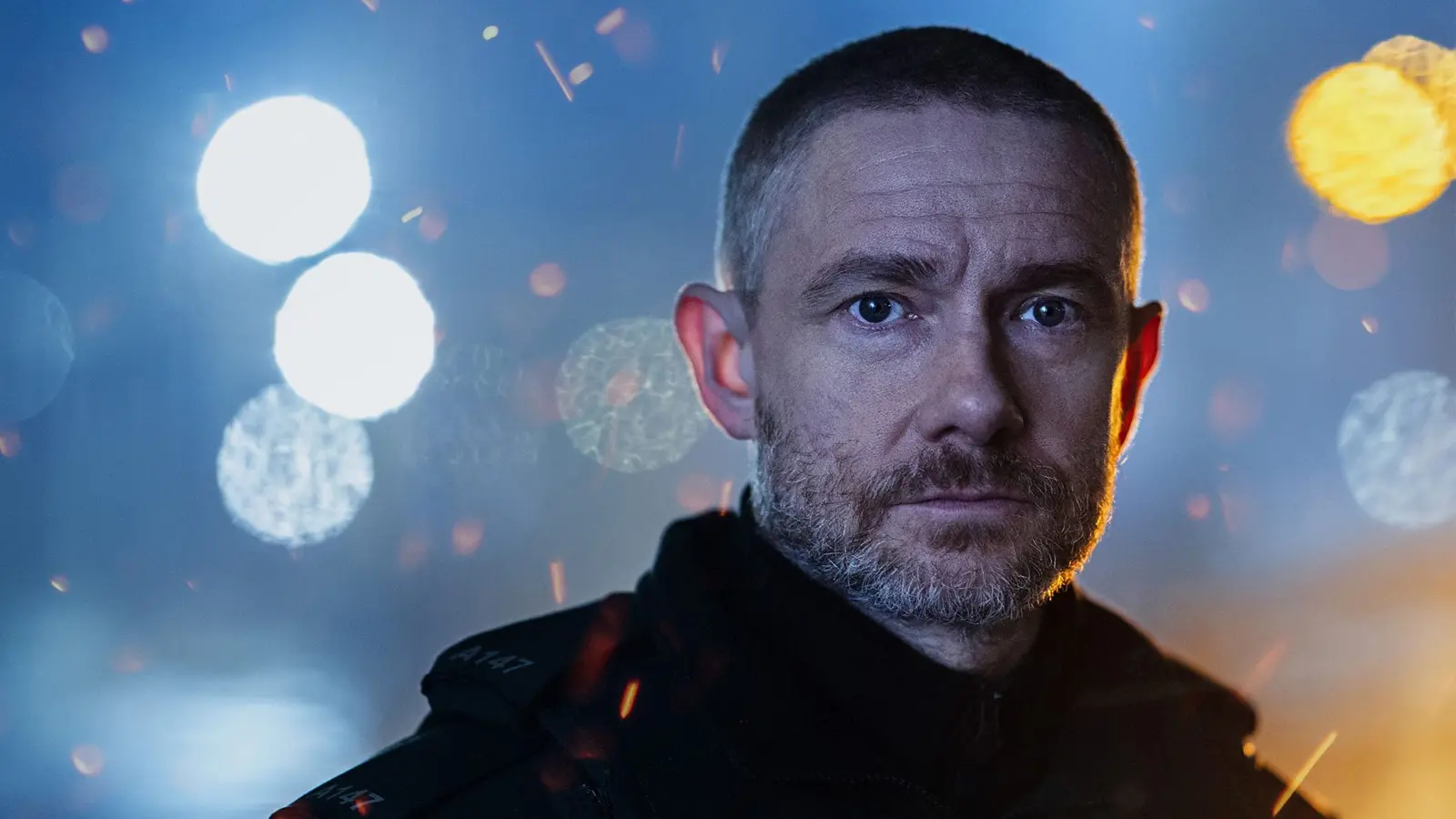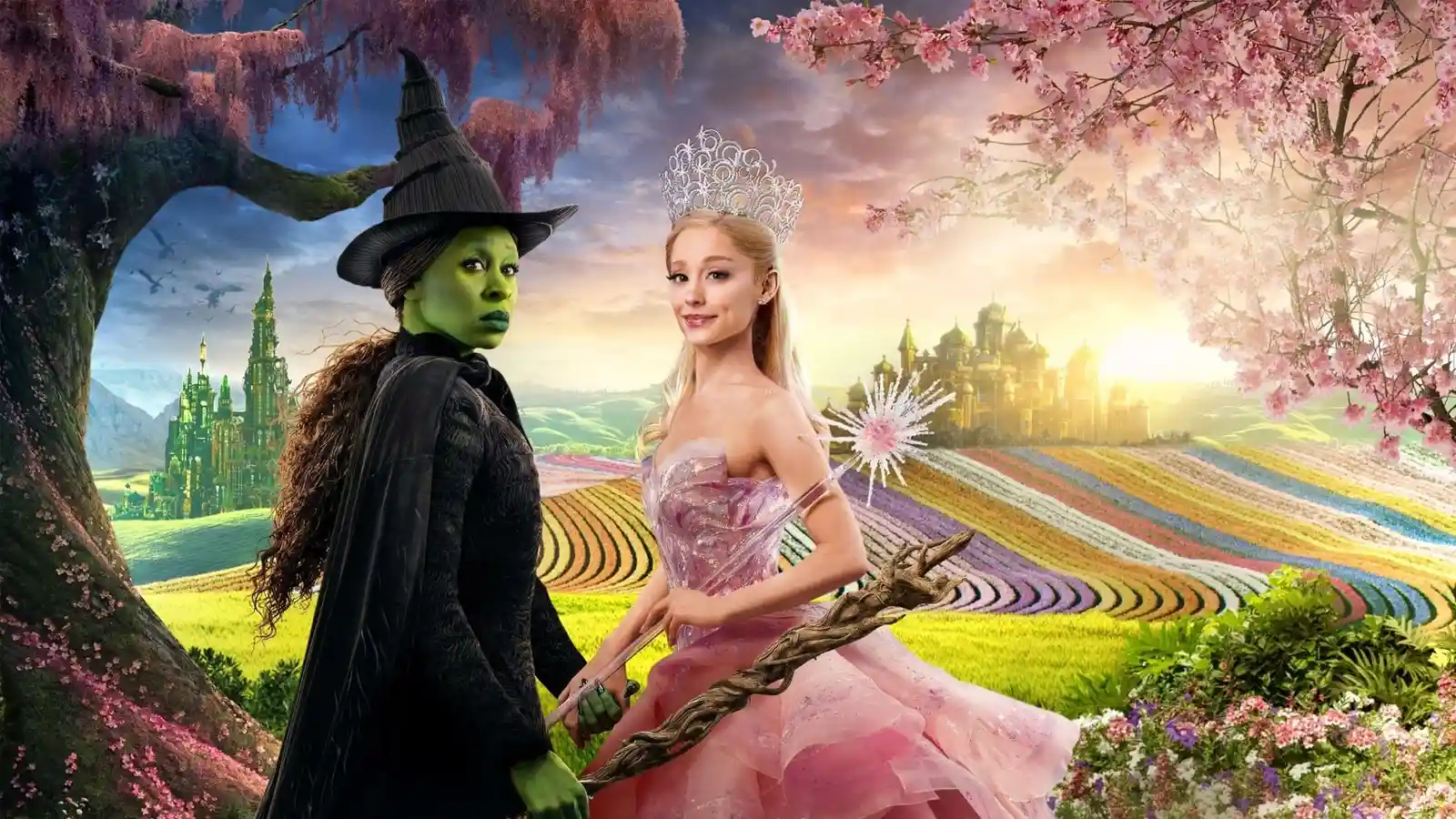The Responder
Develop your knowledge and understanding of the critically acclaimed police drama.
Introduction
Chris Carson is a police responder who is struggling to cope with the horrific and ridiculous demands of working the gritty streets of Liverpool. He wants to be “a good bobby” and tries to help a young woman escape the cycle of crime and addiction, but he is compromised by his relationship with Carl, a drug dealer.
His personal life is also at breaking point. Scared he is becoming a “monster”, Chris is unable to fully connect with his daughter and is “disappearing” from his wife.
His experiences expose the moral consequences of social inequality and urban decay with characters being forced to make choices because they are victims of this broken system.
We are going to focus on how the narrative constructs its powerful message and its impact on the audience.
Contents
Narrative
Media producers carefully arrange the beats of the story into a coherent structure that will help the audience make sense of the characters and their world. The shots of Chris speeding away from Carl and his henchmen, for example, acquires its full value because of its relationships with other scenes in the narrative.
It is also important to study narratives because they reflect or challenge our cultural values.
Tzvetan Todorov
The first framework we are going to apply was developed by Tzvetan Todorov (1969). He argued narratives begin with the disruption of a stable situation and end with a repair which establishes a new stability. Meanings are produced by this movement rather than the individual events in the story.
Equilibrium
The protagonist’s equilibrium is established in the opening nine minutes of the episode.
During the therapy session, Chris worries he is going to “crack” with “another week of nights stretching out”. He wants to be “a good bobby”, “do good things” and “be normal”, but he ends each shift with “spit on me face” and “blood on me boots”. He cannot remember the last time he “did some good”.
The close-ups and long takes on his weary face emphasise his dread. The tight framing of the shot-reverse-shots also feels claustrophobic and suggests the misery “never stops”.
The police responder is “only on duty for five minutes” when he is called back to a block of flats he visited “last night” and “three times last week”. Exasperated, he threatens to throw the dog over the balcony and kill Trevor if he messes around “one more time”. Notice how his voice becomes echoey, the non-diegetic ring reaches a crescendo, and the quick succession of three jump-cuts creates discontinuity in time and action. Chris is “struggling here”.
Before he gets out of bed in the early evening, he takes prescription medication to help him cope with the relentless stress and strain of the job, but he is becoming increasingly distant from his family. Consider this shot of him watching his wife and daughter arriving home.
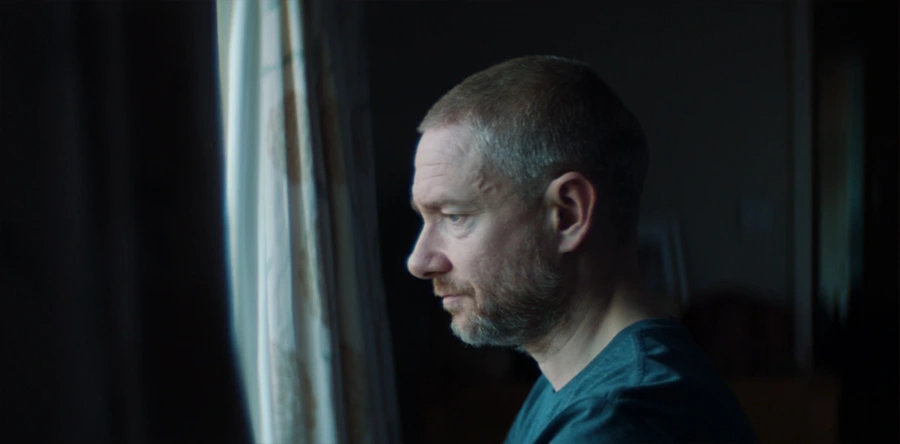
The spatial relationship between the characters connotes their emotional tension. He is on the first floor of the house whereas they are positioned lower down on the driveway. The window allows the protagonist to see his family, but he is physically separated from them and “disappearing” from their lives.
Chris has cooked “sausage and mash again”. Although Tilly jokes it was served with beans the previous night and she is now having peas, the dinner demonstrates his inability to change even the smallest routines in his life. In the next scene, Chris does not have the patience to read Jack and the Beanstalk to his daughter and offers his own version instead.
The point of view shot of the hole he punched in “the door upstairs” is another obvious signifier of his troubles. The low-key lighting in the bathroom, the silence of the scene, and the focus on his heavy, nasal breathing while he brushes his teeth combine to create an atmosphere of isolation and introspection.
These sequences follow a non-linear structure: the therapy session; the titles ending with him at the block of flats; waking up at home; eating dinner; responding to the disturbance between the neighbours; and then back to the therapist. The equilibrium feels appropriately disorientating and unsettling.
Disequilibrium
The phone call from Carl Sweeney marks the turning point in the narrative – the disruption.
Chris Carson is a police officer who wants to “do good things”, but he also has a “thing” with the drug dealer so he must repair the problem by finding “town-centre” Casey.
When he questions the “baghead” outside the derelict building, he wants to know if she has “fallen out with someone” and offers to “sort it”. His decision to let her go demonstrates his professional duty to protect people is more important than his “understanding” with Carl. It is also worth noting he is willing to pay Casey to “empty” her pockets because he respects her request to be searched by a female officer. These actions encourage the audience to admire his integrity.
Characters are defined by their choices. Imagine if he ignored his principles and pretended to arrest Casey. Taking her straight to Carl would have made the protagonist immediately complicit in the drug dealer’s crimes.
However, Chris is caught “lying” about not knowing where Casey has been hiding. Carl says there is now a “problem” between them and warns the police officer “you don’t have a choice”. The audience continues to sympathise with Chris because the situation is beyond his control. He has to “get in the mood” and “put this to bed”.
The disequilibrium should be repaired when Chris drives Casey to meet with Carl, but the protagonist learns the drug dealer is “so angry” because she “robbed all his cocaine”. This is not Chris’s “game”. The director emphasises the danger by making sure the audience sees Barry with the hammer, such as the weapon being the dominant signifier in this shot.
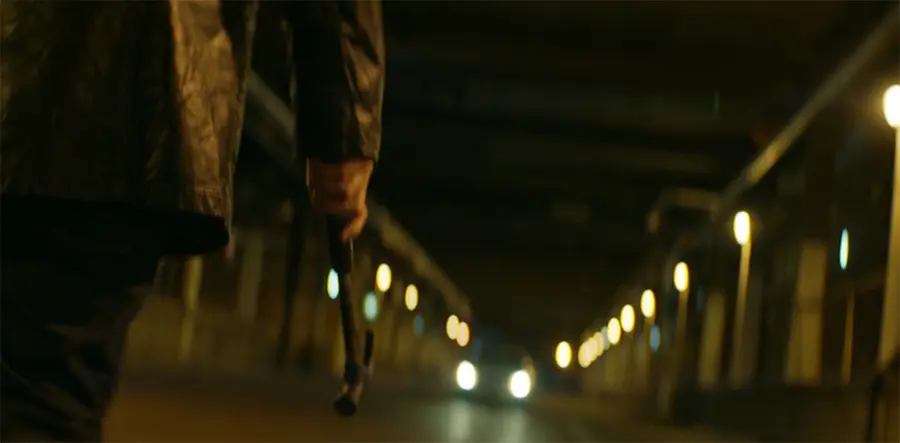
There are moments in the story when we doubt Chris’s integrity, such as running “the odd number plate” for Carl in return for “free money” or asking Marco if he has any weed and then buying the bag from Casey for thirty pounds, but his motivation is revealed by the end of the episode. In the care home, a place that “costs enough”, one of the workers hands him another invoice to be paid. The weed was to relieve his mother’s pain. He was just trying to “do good things”.
The disruption drew Chris deeper into the criminal underworld. The protagonist resists the corruption and begins to rebuild his sense of self-worth by offering to “sort it” for Casey. Later, realising she is going to get kicked and battered, he has the courage to help her escape. Chris is the hero who is trying to regain balance in a flawed world.
New Equilibrium
Todorov argued the minimum requirement for plot is the movement from one state of equilibrium to another. The Responder satisfies that demand by having a clear progression from the equilibrium to the disequilibrium.
Sitting across from his mother, Chris reflects on his “usual” experiences working the night shift. Smiling, he says he has done “a good thing”. The dialogue recalls his words to the therapist at the start of the narrative and delivers a satisfying payoff to his internal conflict. Chris has reasserted his sense of morality and justice.
Helping Casey “out of a hole” is the repair that promises a new equilibrium. She is a “nightmare” and a “liability”, but she still matters, and he hopes his actions “might make a difference for a change”.
It is not a neat ending with the good guys overcoming the forces of evil. The partial resolution resonates with our perceptions of our fractured society and feels authentic.
Character Types
Defining the characters in terms of their spheres of action is another way we can appreciate how the episode constructs meaning. Vladimir Propp (1968) argued the role of the villain is to “disturb the peace” or “cause some form of misfortune, damage, or harm”. Casey fulfils this function because she stole the bag of drugs and starts “the actual movement of the tale”.
Carl realises there is a lack and sends Chris on a quest to find “town-centre” Casey. Even when he forces the police responder “to put this to bed”, his sphere of action makes him the dispatcher.
Chris is the seeker-hero whose “goal” is to find Casey and “liquidate the misfortune”.
Marco is a helper because he supports Chris in his search for Casey. There is also the unnamed source who informs Chris that Casey is ordering a “spicy doner” from the kebab shop.
The moral complexity of the narrative is clear when Casey suddenly becomes a princess – the “sought after” character who needs rescued from the drug dealer and his henchmen.
All these characters have a sphere of action, moving the drug plot from one beat to the next. They are deeply flawed and contribute to the show’s exploration of moral uncertainty.
Kate and Tilly symbolise the stable life Chris wants to preserve. His actions are motivated by his desire to protect his family and marriage. They are princesses.
The therapist claims she has given Chris the “tools” to deal with his problems. This sphere of action makes her a donor if we interpret his determination to “do good things” as the lack in the narrative. We can also classify Casey as a donor because she sells the drugs Chris gives to his mum.
In Propp’s terms, the false hero is someone who appears to do good, but whose actions are self-serving and deceitful. Outside the school gates, Ray Mullen presents himself as the caring father. It is an empty performance to attract Kate’s attention.
It seems no one in this story is beyond reproach.
Narrative Codes
Roland Barthes (1974) argued the chronology of narratives were driven by proairetic (action) and hermeneutic (enigma) codes.
Action Codes
Prorairetic codes help with the “coordination of the actions represented”.
Here is a straightforward example of causality. Marco says Casey is “dossing around” in the “derelict shops”. Chris sarcastically quips, “They’re all derelict shops”. The protagonist decides to take the young lad in the car to help “narrow it down”. Therefore, the exchange operates as an action code.
We have already discussed many of the action codes which move the drug plot towards its dramatic conclusion, so let’s explore the enigma codes which have a more complex structure.
Enigma Codes
Writers will deliberately withhold information from the audience, leaving a beat of the story unexplained so we need to keep watching to learn the answer. A good example of an enigma code is the reason why Carl wants Casey.
- The first phone call from Carl which introduces the subject of the enigma – Casey. The drug dealer needs to “speak to her”, but we don’t know why there is such urgency.
- Chris asks, “What’s up?” Carl delays the answer: “It’s nothing to do with you.”
- When Carl is forced into an answer, he replies, “She owes me”. This is a snare because the response is misleading.
- Outside the derelict building, Casey reassures Chris that “nothing’s happening” – another snare.
- The revelation of truth occurs when the narrative cuts to Casey on the phone comparing the amount of cocaine she has stolen to three “massive box[es] of washing powder”.
Each of these beats form the enigma code at the centre of the drug plot.
Another intriguing enigma code is Chris’s backstory. At the start of the episode, the audience simply assumes Chris is a responder tasked with working the streets of Liverpool. However, when Marco is in the back seat of the squad car being questioned about the hundred quid, he jokes, “You trying to be a detective again then.” This makes the audience wonder why Chris was demoted at some point in his career.
Rachel Hargreaves wants to know if the “stories about him” are “true”. Phil O’Rourke says Chris was a “cracking bobby back in the day” and “a good sergeant”, but there is no revelation of truth. We only learn it was “complicated” – a partial answer to the enigma code that makes us even more engaged. The lack of clarity keeps the audience questioning whether Chris is a victim of a broken institution or the architect of his own downfall.
At the dinner table, Kate receives a text message and claims it is something to do with work. However, the awkward silence, the close-up on Chris staring at her, and the way she turns her head all suggest she is hiding something. We get a partial answer when Ray tries to get her attention outside the school gates. The disclosure of the enigma code is suspended until Chris asks Kate if she slept with Ray in the third episode.
Semantic Codes
Semantic codes have a “flicker of meaning” and offer a little more insight into the characters and their world. In television dramas, the decisions made by the location managers, set designers, prop masters, and wardrobe departments are incredibly important because everything in front of the camera can be used to communicate meaning.
The following shot is of Carl leaving his house to search for Casey.

The use of the German car manufacturer encodes a certain level of wealth and prestige. The black colour looks sleek, and the personalised number plate suggests a flashy confidence. This is a character who has cash to spend.
Chris’s squad car simply denotes his role as a police responder. Outside of work, he drives a less expensive German car than Carl, but his is an estate model designed for families, emphasising the character’s priorities.
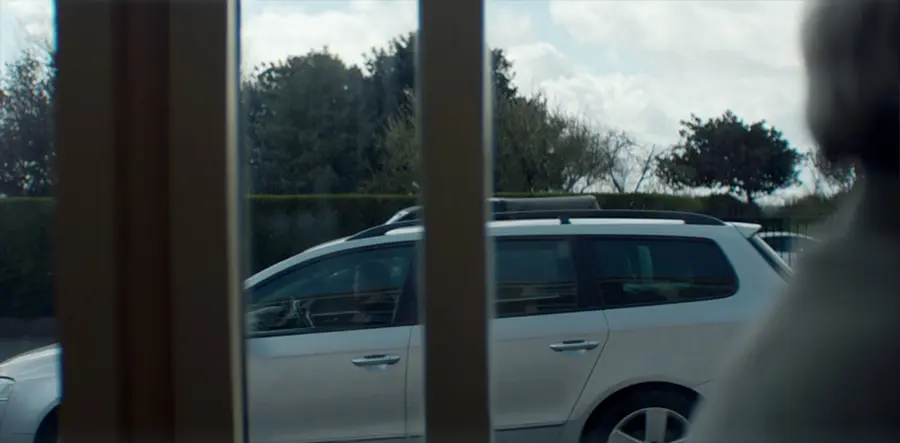
Symbolic Codes
Symbolic codes function on a more abstract level by organising meaning in the media text. The binary opposition between good and evil is a common process in mass culture. As the therapist notes in the third episode, “It’s the first thing a child learns.” The Responder blurs those values by representing morally complex characters, especially the police officer who is compromised by his connections to a drug dealer.
Think about the scene with the sudden death. The dispatcher on the radio is thankful there are no suspicious circumstances and bitterly remarks on the lack of supervision available. This beat of the narrative seems to operate as a semantic code by signifying police resources are being stretched. Doctor Sutherland eventually arrives and complains, “It’s a busy night”.
A pattern begins to emerge.
The therapist mistakes Chris for another client called James. She was “running late” and is “absolutely swamped” with so many people needing her support. She mentions two therapists used to work in the office and how she “hates this job”.
Chris takes the bag of drugs to the police station where he meets another officer who is going to spend three hours logging garden gnomes as evidence. He comments the “job is not worth it”.
The programme is a social realist drama exposing how the institutions and systems meant to protect vulnerable people are broken. Again, Chris is the most obvious example of this message. He is being destroyed because the underfunding of the public sector makes it nearly impossible for him to do his job ethically or effectively.
Everyone is burnt out.
Cultural Codes
Cultural codes are references to ideas that exist outside the text. These signs rely on our own knowledge to acquire meaning. The most obvious example in The Responder is the picture of John Wayne in Trevor’s flat.
The actor was famous for playing gunslingers who brought order to the Wild West, such as his Oscar winning role as the US Marshall tracking down a murdered father and bringing the killer to justice in True Grit (1969). He also played heroic soldiers in World War II movies. John Wayne remains an icon of Hollywood cinema and a symbol of traditional American values.
The Responder delivers a representation of work-class life with an emphasis on poverty, crime, addiction and social neglect in modern Liverpool. All the characters have their struggles. The allusion to this iconic actor is a reminder that there is no rugged cowboy riding into Merseyside to save them.
Carl’s surname is Sweeney. This could be an ironic reference to The Sweeney, a popular television show in the 1970s which followed the officers in the Flying Squad, a police branch specialising in armed robbery.
One final cultural code worth mentioning is Chris’s police number: Alpha 1-4-7. This number is the highest break you can achieve in a game of snooker. Despite his flaws, perhaps Chris is the champion we need.
Order and Integration
Thomas Schaltz (1981) argued genre was a “social force” because it reinforced our values and raised questions about socio-cultural issues. He identified two dominant narrative strategies: order and integration.
Chris is a police responder who wants to do the right thing and believes in the “values of social order”. His work explores the bleak social inequality of Liverpool and how people are affected by poverty and mental health. In terms of Schatz’s theory, the city is a “contested space” with “externalised” violence which the protagonist, who is isolated and self-reliant, has to mediate. His attempt to rescue Casey and restore balance makes The Responder a genre of order.
Chris also wants to reconnect with his family. The “internalised” conflict and their determination to live in an “ideologically stable” home makes The Responder a genre of integration as well.
These conflicts are interconnected, emphasising the moral cost of our broken society. Ordinary people, including police officers, are shaped by systems which lack funding and resources. The programme gives the audience the courage to find our own resolutions to the physical and ideologically threats in our lives.
Repetition and Difference
Steve Neale (1980) argued a genre was defined by its “specific variation of the interplay of codes”. The Responder is driven by action codes focused on law enforcement and criminal behaviour. The disruption is the theft of drugs. The protagonist investigates the lack and discovers the truth of the enigma code. The repair is a moment of violent threat.
The iconography is typical of police procedures: the unforms, squad cars and sirens, calls coming over the radio asking for available units, scenes shot on location, dark streets, stop and search, the interrogation of suspects, interviewing witnesses, and criminal activity.
The Responder is a police drama.
There is also a mode of authenticity delivered by the writer, Tony Schumacher, who worked as a police responder for fourteen years. What we see on the screen is an accurate representation of law enforcement and its routines.
Neale argued genres were maintained through a process of “repetition and difference”. Although The Responder follows the “interplay of codes” we expect from a police drama, the narrative rejects the case-of-the-week structure where the detective solves the crime. Instead, the programme focuses on how crime and policing are affecting people.
The Responder subverts aspects of the genre. Most notably, no one is actually arrested in the first season. It is a police drama without the traditional application of justice. Everyone is just trying to survive. That’s social realism. Perhaps The Responder is so successful because it is a character-driven hybrid of police drama, family conflict and social realism.
Mode of Consumption
Many viewers watch police dramas because they provide an entertaining diversion. When the programmes were broadcast weekly on linear television, each episode was usually self-contained with the criminal being apprehended and order restored. You could miss an episode and still know what was happening because there was no sense of progression. The characters were static and the setting remained unchanged.
Sometimes, the series would include a two-parter with dramatic turning points or emotional developments, giving the audience something to anticipate and talk about between broadcasts. It was an effective promotional hook.
By contrast, The Responder is a serialised narrative. In other words, the entire storyline is broken down into smaller episodes. The first episode does end on a cliffhanger with Carl threatening Chis, encouraging the audience to keep watching.
Access to digital technologies has changed our mode of consumption. We can now stream entire series on demand and have a more sustained engagement with the texts.
Producers have responded to the changing media landscape and audience viewing habits by delivering character-driven dramas with complex narratives, such as The Responder.
Formatting
David Hesmondhalgh (2019) identified three key strategies media producers follow to help construct an audience for their texts: genre, star power and serialisation.
Police dramas are among the most popular television genres in the UK and internationally. Their narratives are accessible, and audiences appreciate their themes of social relevance. The Responder has the potential to appeal to viewers around the world.
It also has the star power of Martin Freeman, an actor who shot to fame in The Office (2001) and played the leading role in The Hobbit trilogy. You probably watched him in Nativity! (2009) at some point in school. He is also credited as an executive producer for The Responder because he was involved in the development process and was able to influence creative decisions.
The immediate success of the first season enabled the show to be renewed for a second season.
Media Effects
Carl’s wife reprimands him for letting Lexi watch a violent show, saying, “It’s got killing in it.” She is concerned the representations of explosions and murder will have a negative impact on their “young” daughter. Her concerns are backed up by plenty of research.
Desensitisation
Carl responds to her criticism, saying, “It’s not real killing.”
Some critics believe heavy exposure to representations of violence in the media makes audiences less responsive and empathetic to the suffering of others in real life. Young people might be more susceptible to the negative effects of violence portrayed on the screen and become desensitised to the harm it causes.
Jodie does not want her daughter growing up believing violence is normal and acceptable.
Social Cognitive Theory
Albert Bandura’s (1963) famous experiments with the Bobo Doll suggested symbolic role models on television could influence our behaviour in real life. If we see violence being rewarded on the screen, we might imitate those actions in real life.
However, The Responder represents violence as a destructive response to stress and desperation. When Chris attacks Trevor, the camerawork is shaky, the editor uses jump-cuts and breaks the 180-degree rule, and the diegetic sounds are muted. The scene is uncomfortable to watch. It is certainly not an exciting spectacle to be imitated.
Notice how Chris looks at his phone. Although it does not position the audience to accept the violence, the shot is a reminder that Chris is being threatened by Carl.
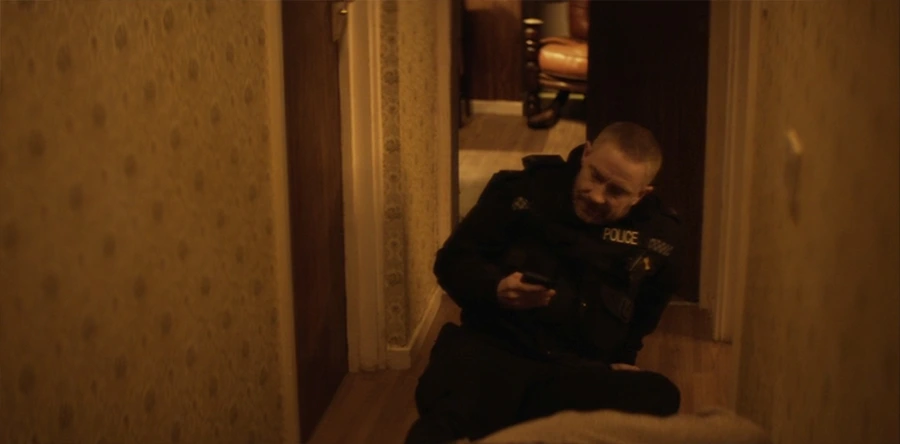
Cultivation Theory
The representations of poverty and despair in The Responder will resonate with viewers who are already familiar with the issues in society. We explored how the programme meets our expectations of a police drama. The audience will have experienced similar depictions in other media texts, including news bulletins and documentaries.
The cumulation of the representations will influence our perception of society until we become enculturated into believing the world is full corruption and systemic failures.
Heavy users of the media who watch The Responder might come away feeling urban Liverpool is collapsing because of drug addiction and criminal activity. Even people who have never personally experienced the dangers will start to believe the Britain is broken.
George Gerber (1976) called this effect Mean World Syndrome.
However, The Responder does not sensationalise violence. The narrative challenges assumptions by humanising the characters and showing the reasons behind the social breakdown.
Decoding Positions
Everyone will interpret the programme according to their own framework of knowledge. Stuart Hall identified three theoretical decoding positions.
Most viewers will sympathise with Chris and how systemic failures and social inequality have affected his mental wellbeing. Some viewers will even acknowledge Carl is struggling to provide for his family just like everyone else and Casey is the product of a broken Britain. This is the preferred reading.
Some viewers will take a negotiated reading, sympathising with Chris but rejecting the deviant behaviour of the drug dealers and petty criminals.
Other viewers may have wanted to watch a more traditional police drama with the criminals being brought to justice. This sort of narrative would validate their values and ideologies, so they will reject the subversion of the codes and conventions of the genre in The Responder. This is an oppositional reading.
Regulation
Regulation is the balancing of our individual freedom to consume the media and the responsibility to protect vulnerable groups from engaging with harmful content.
The Responder was first broadcast on BBC One after the Watershed. This policy prevents the airing of images unsuitable for younger viewers before 9PM on domestic channels. Ofcom has the power to take action if broadcasters break the Broadcasting Code.
The programme features some frightening and intense scenes. There is also a persistent feeling of dread and despair. Despite the frequent references to drugs, we only get a couple of brief shots of the bag of weed.
The profanity alone is enough to ensure a later slot in the schedule. We have to admire Carl’s family values when he complains Chris has “got me swearing in front of our Lexi here”.
When The Responder was released on DVD, it was given a 15 rating by the British Board of Film Classification (BBFC) who regulate physical media. Disney+ self-regulates and rated the series 16+ when it was added to the streaming service. They also provide descriptors to highlight themes in the content: “violence, fear, coarse language”.
These standards and guidelines help parents, like Jodie Sweeney, make informed choices about the content they allow their children to watch.
The Representation of Family
Rolling the cigarette for his mother, Chris asks if she remembers the time he “dropped” his father’s “bag of baccy”. Her silence is open to interpretation, but we can guess what happened.
The scene ends with this long shot of the two characters:
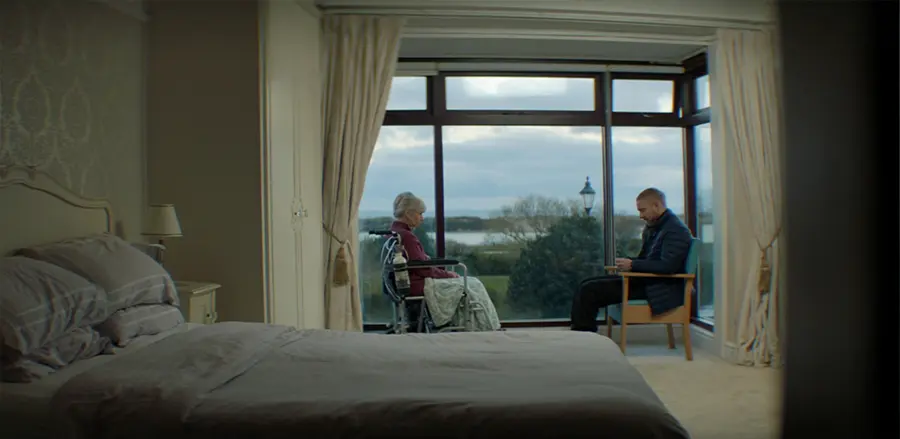
The audio begins playing for the next scene before the video cuts to the therapist’s room: “because I know the damage it does… living with a monster”.
In video editing, this technique is called a J cut. It can be used for smoother transitions or to make connections between the two scenes. The Kuleshov effect describes how meanings are produced by the sequencing of shots. The juxtaposition of her denial with Chris’s reference to “living with a monster” suggests his father was physically and emotionally abusive. He does not want to inflict the same damage on his own family.
Sitting in the backseat of the squad car, Marco reveals, “My dad never lived with us as kids.” He never sees his own kid. He imagines having “a house and that though with a garden” so his baby could “stay sometimes”. They could “be like a family” and “go for walks”.
The family unit is supposed to provide support and a sense of belonging. The relationships are an important part of our identity. The representation of family in The Responder is a mediated version of reality, but the absence of strong male role models in the characters’ lives is another aspect of our broken society.
The Official Trailer
Bibliography
Bandura, A., Ross, D. & Ross, S.A. (1963) Imitation of film-mediated aggressive models. Journal of Abnormal and Social Psychology Vol.66.
Barthes, Roland (1974) S/Z . Trans. Richard Miller Blackwell Publishing
Gerbner, George (1976) Living with Television: The Violence Profile. Journal of Communication.
Hesmondhalgh, David (2019) The Cultural Industries. SAGE Publications Ltd.
Neale, Steve (1980) Genre.
Propp, Vladimir (1968) Morphology of the Folk Tale. Trans. Laurence Scott. University of Texas Press.
Schatz, Thomas (1981) Hollywood Genres Formulas, Filmmaking, and The Studio System. McGraw-Hill Education.
Todorov, Tzvetan (1969) Grammaire du Décaméron/
